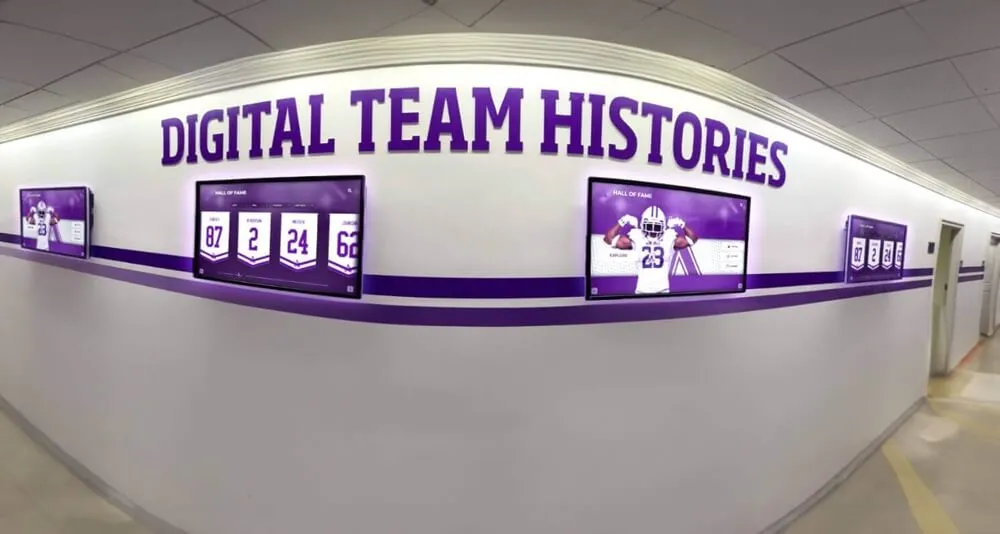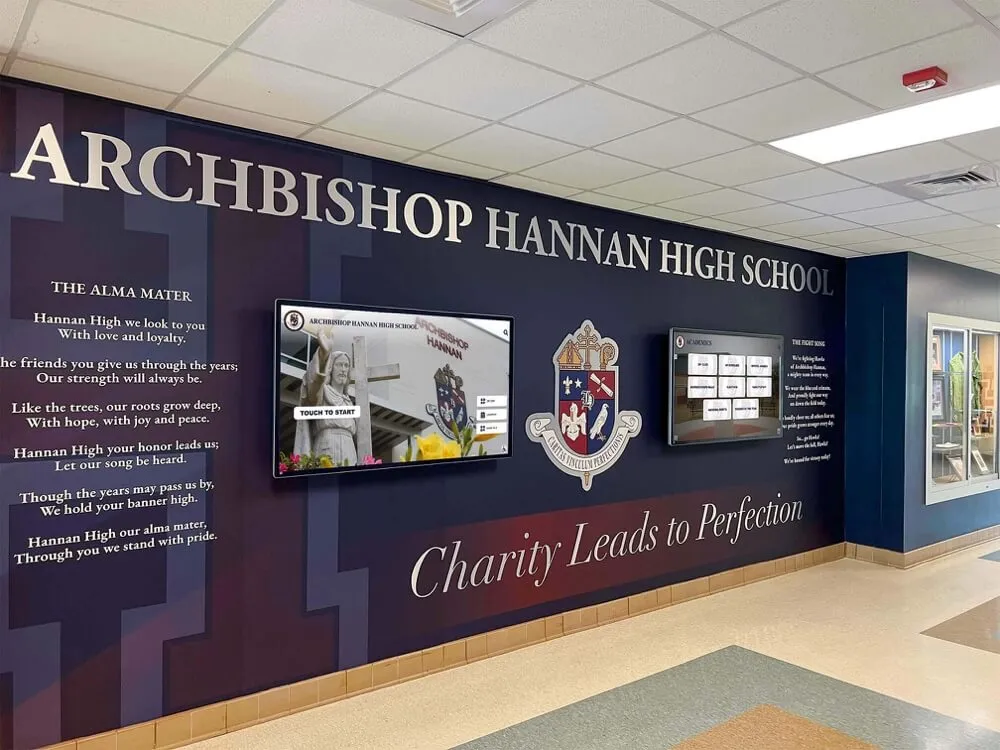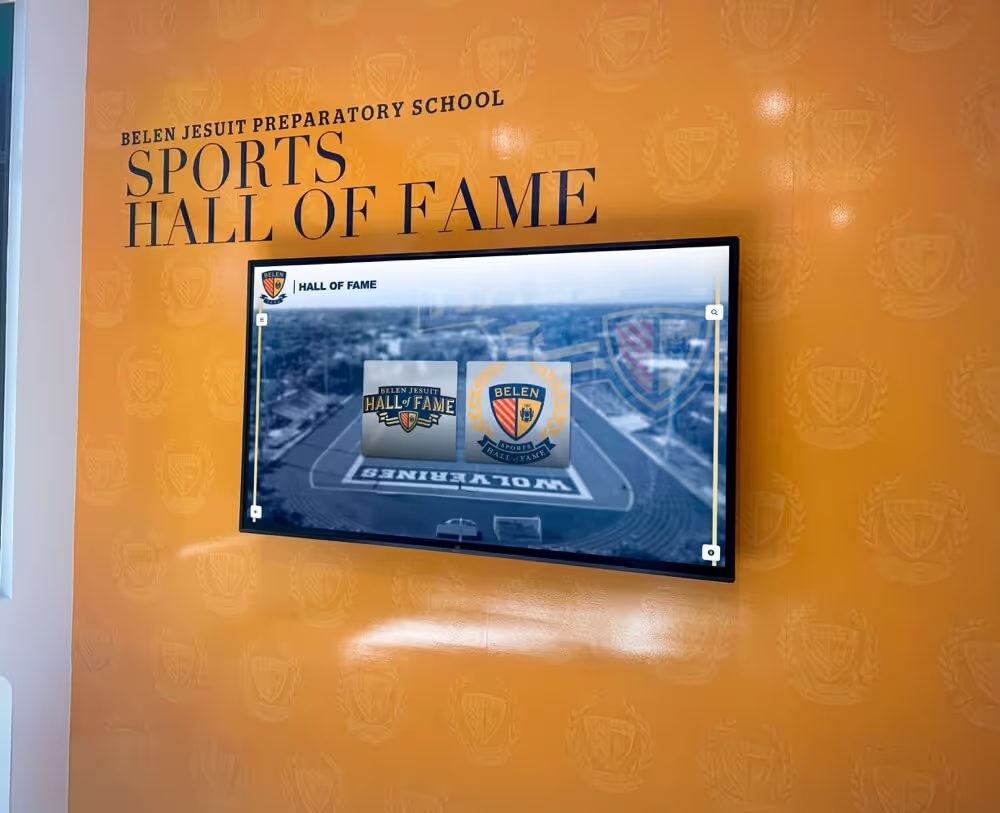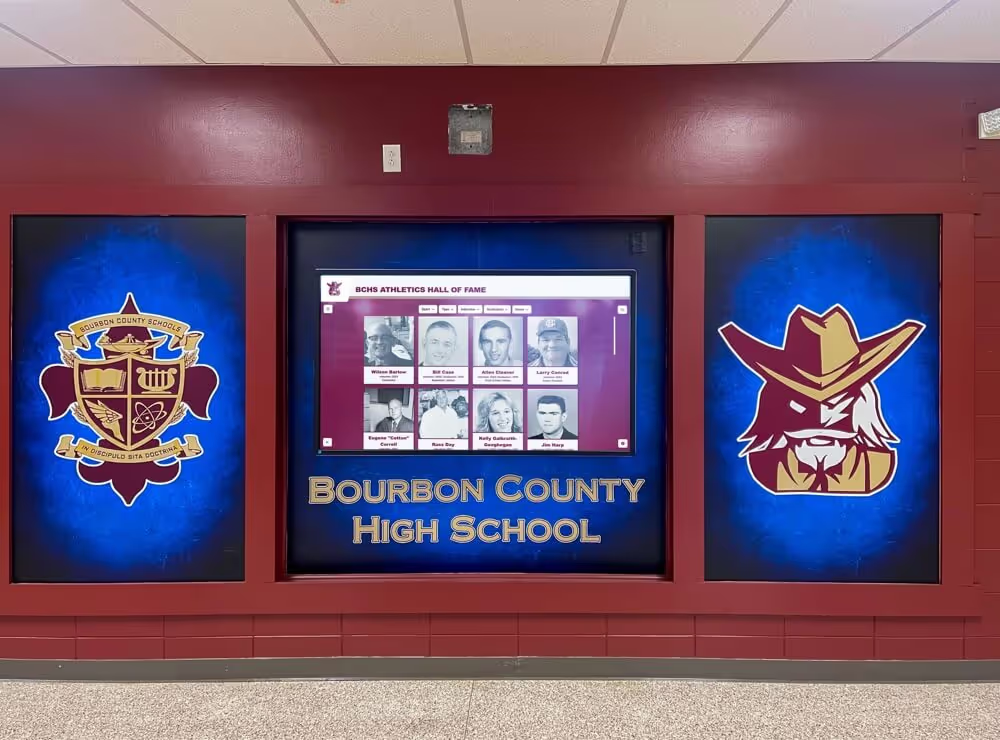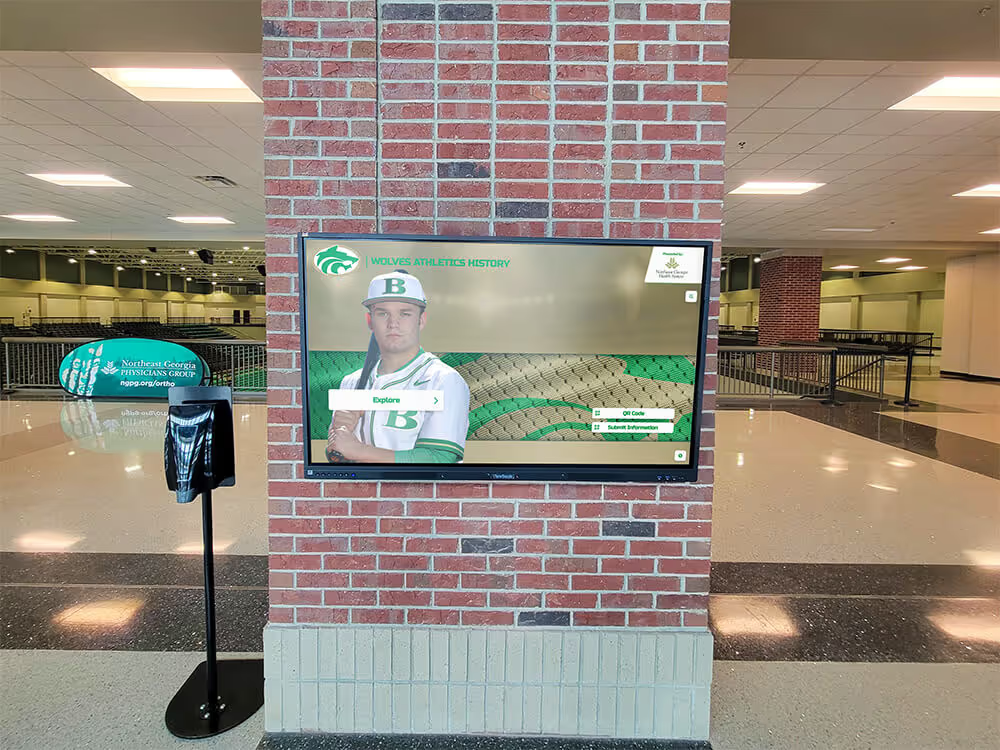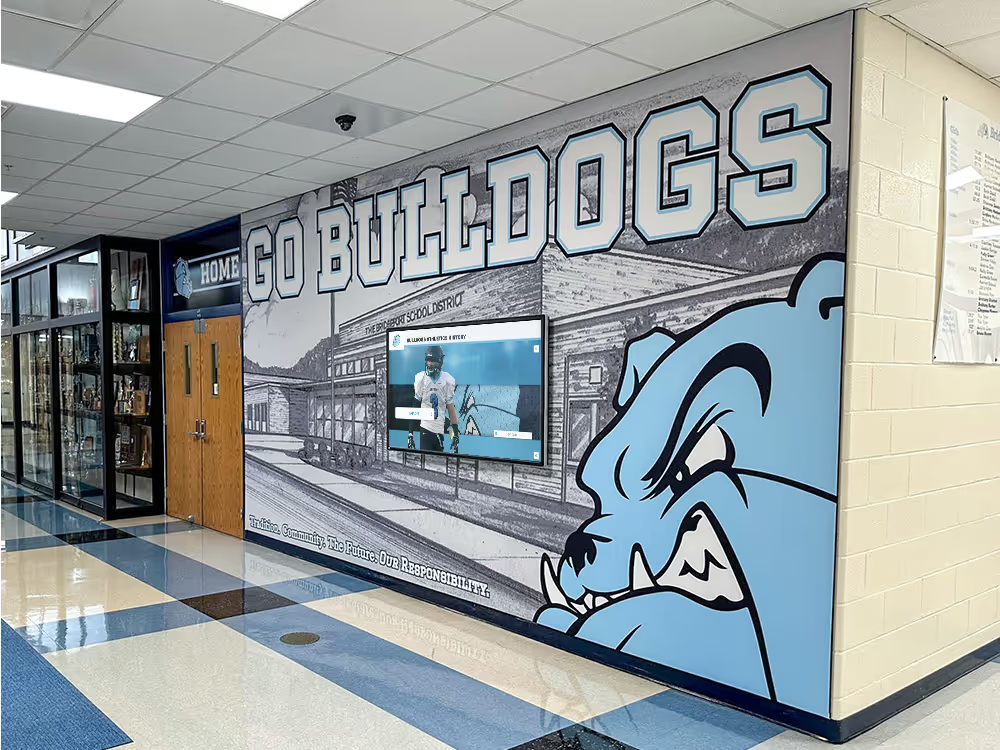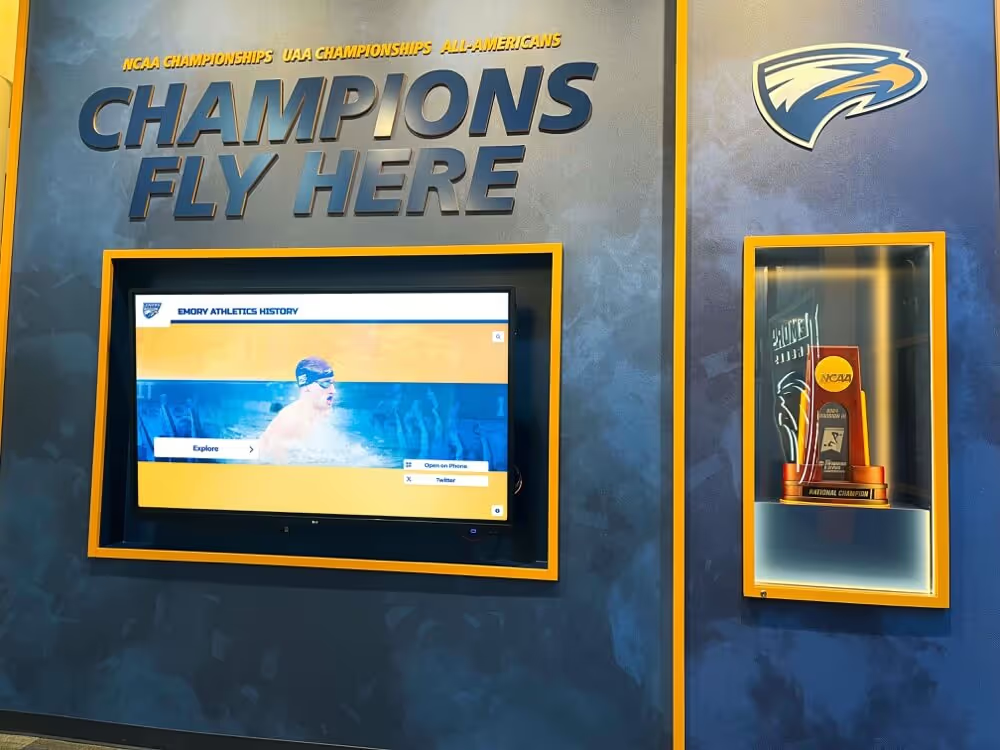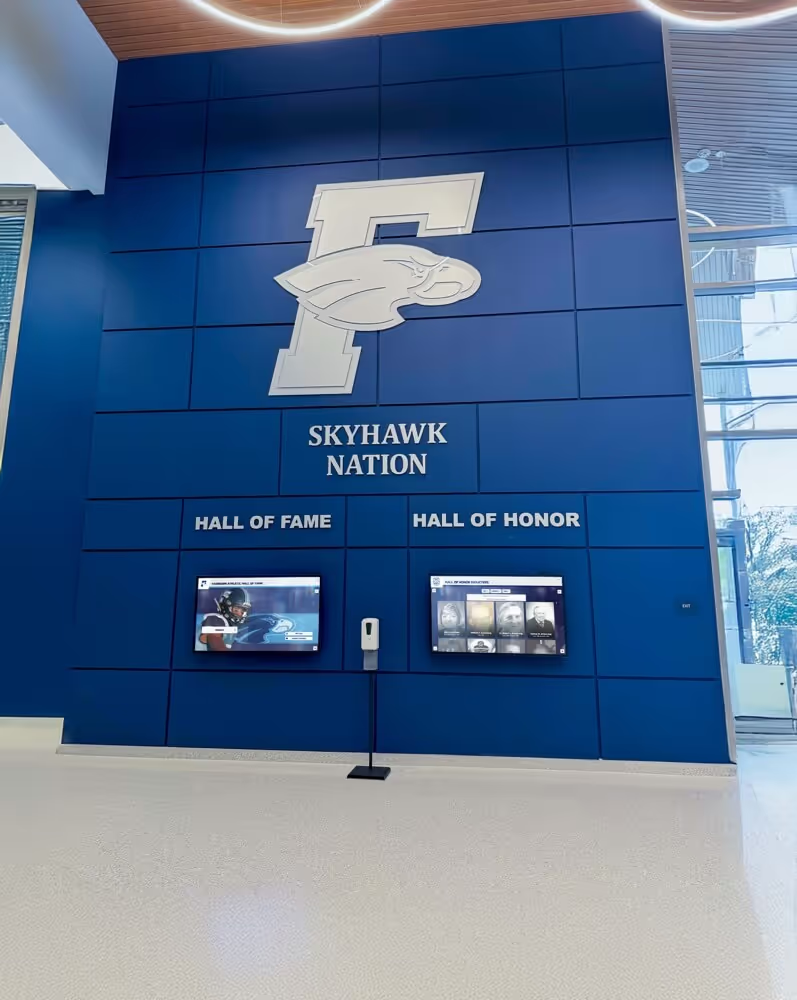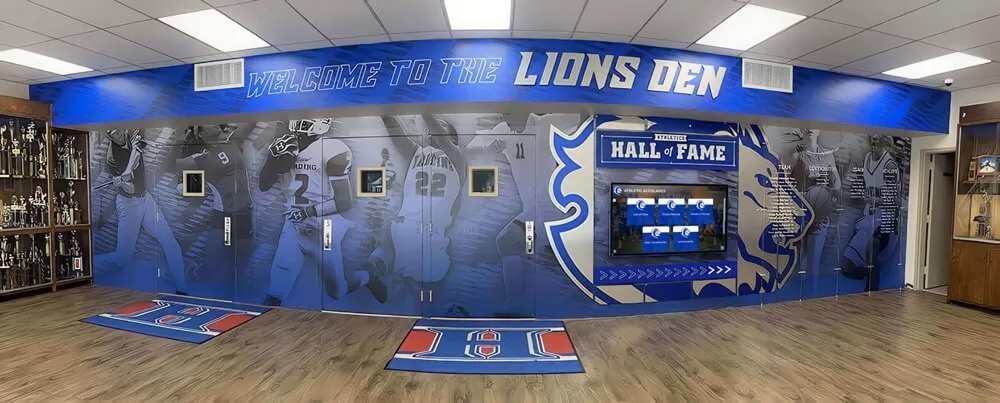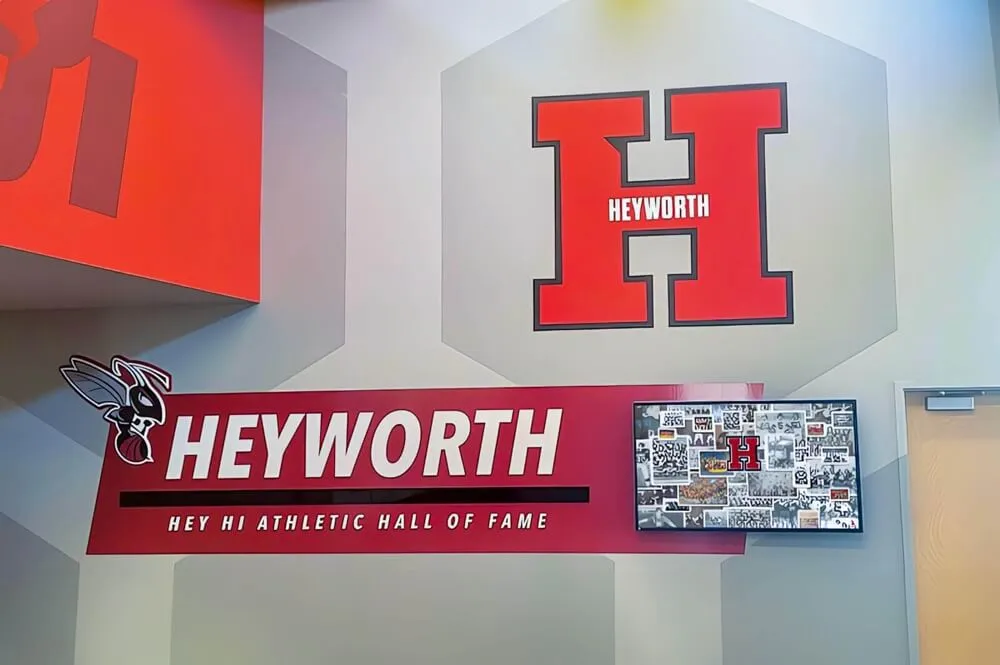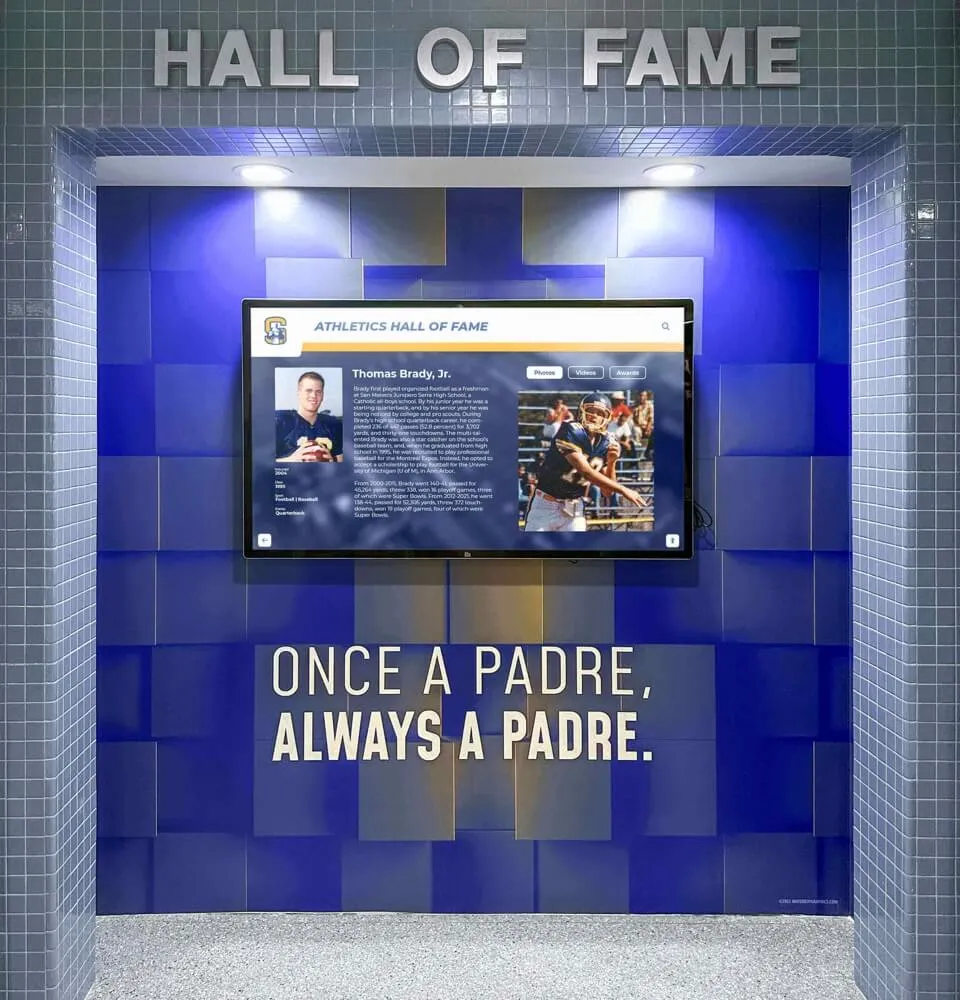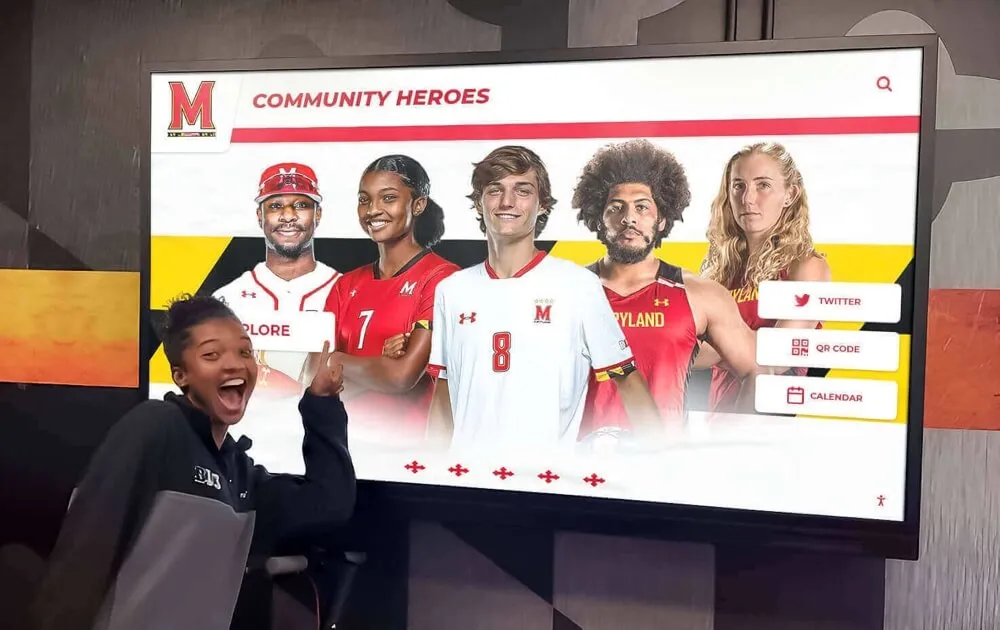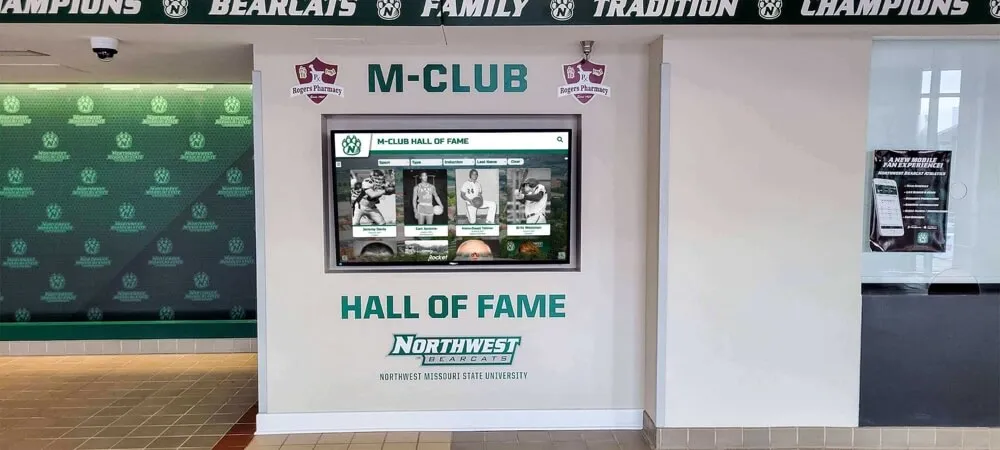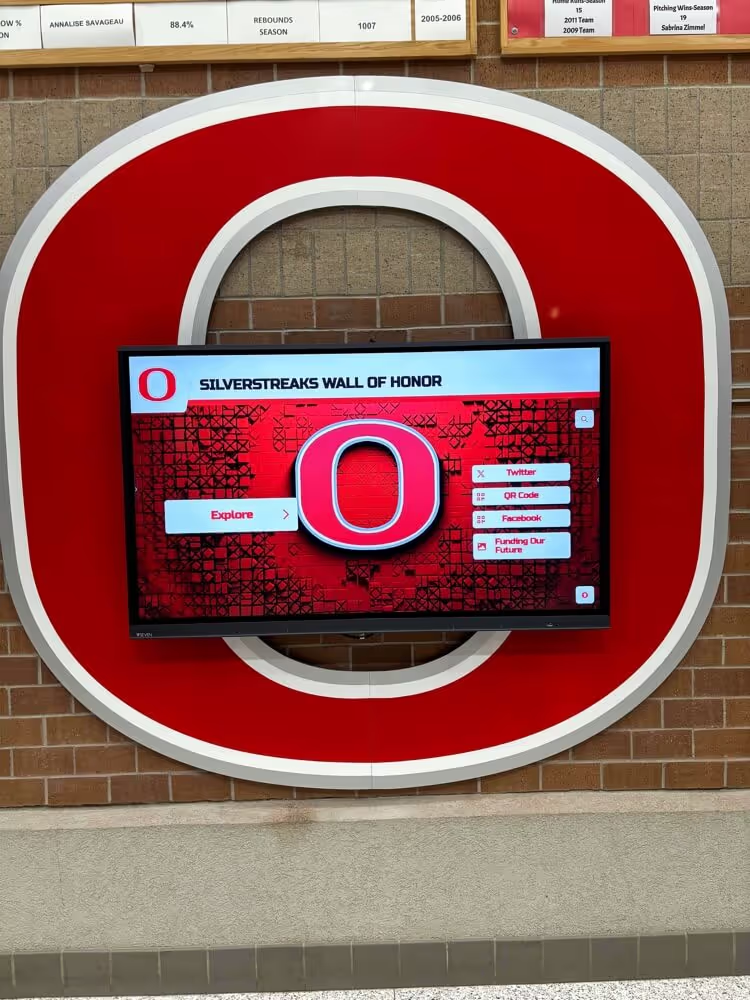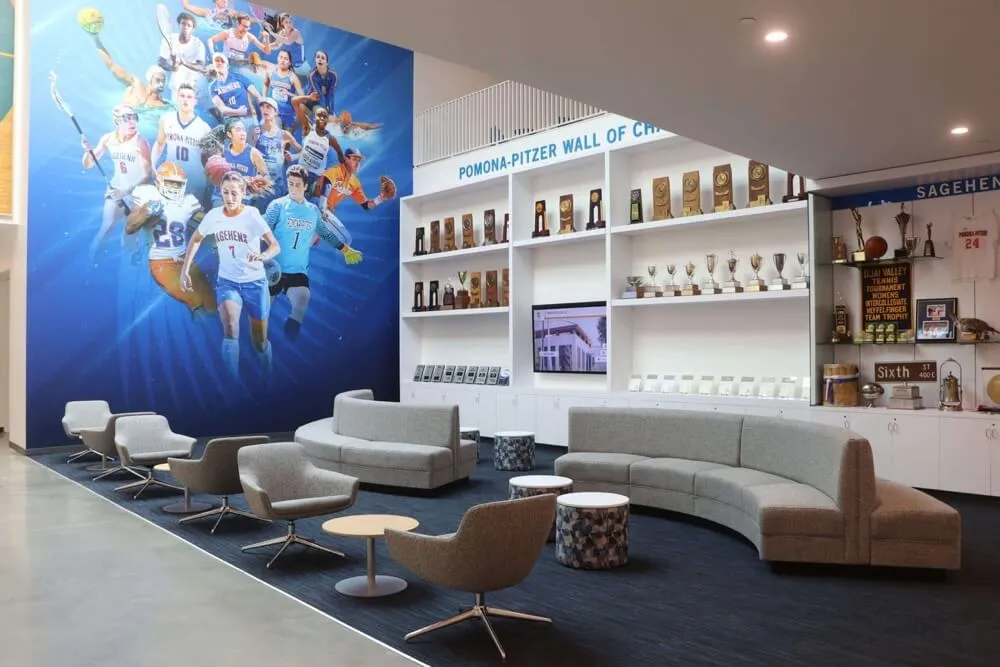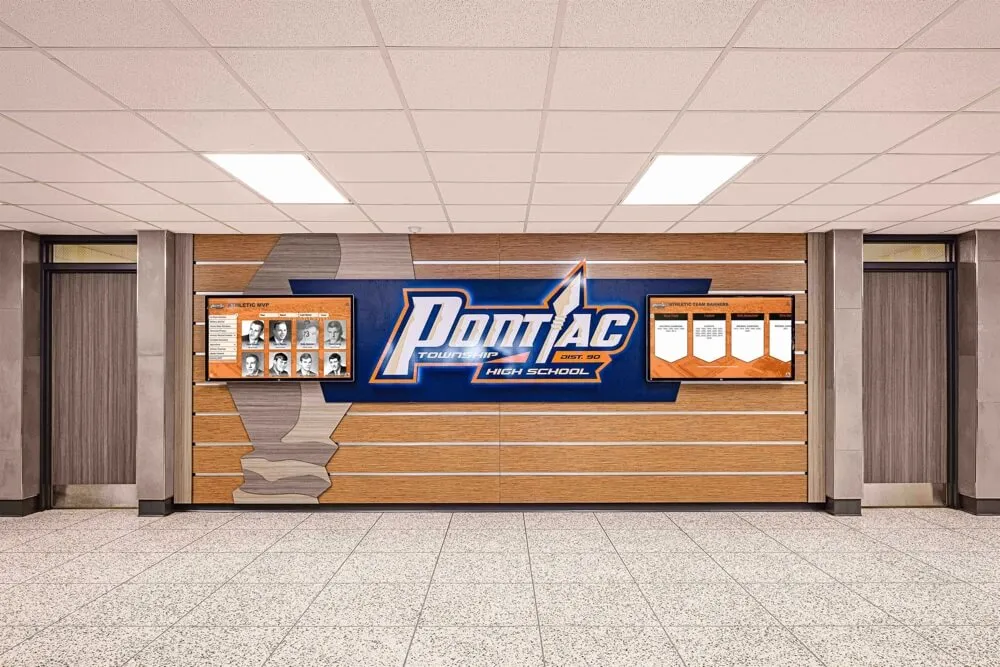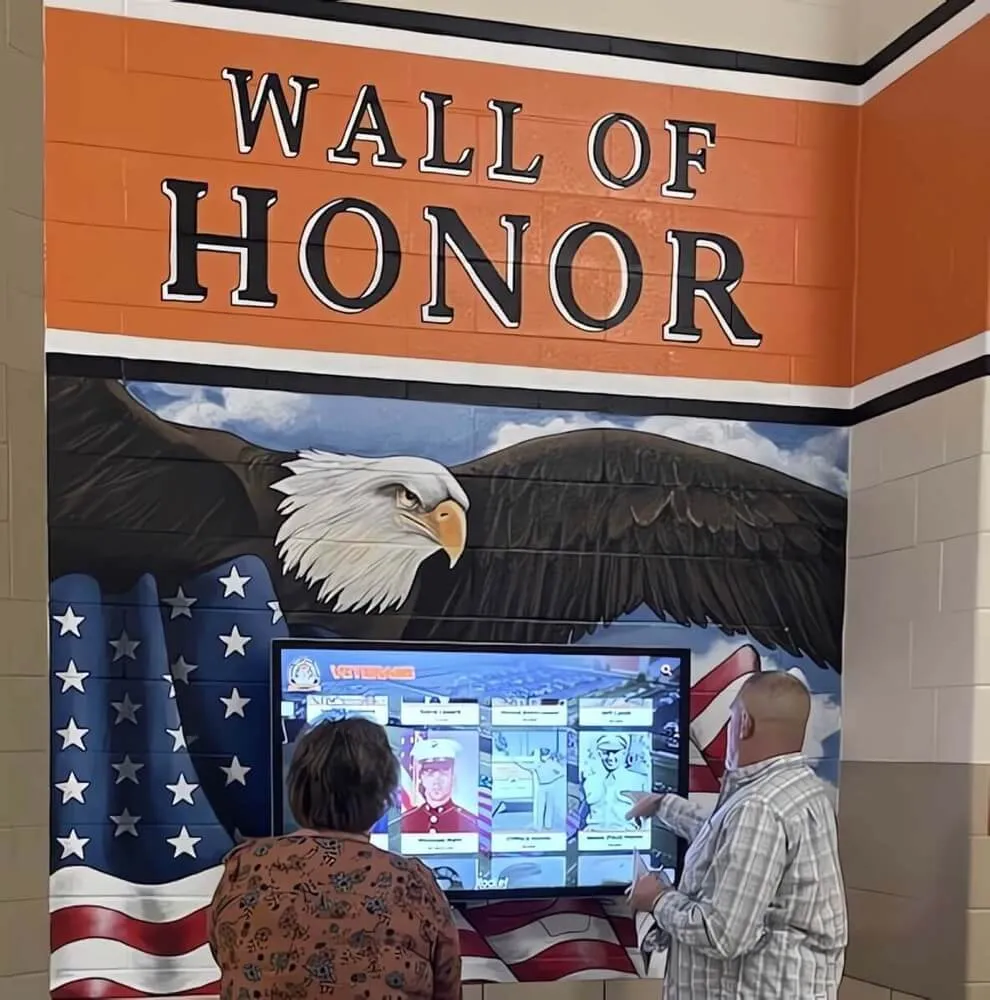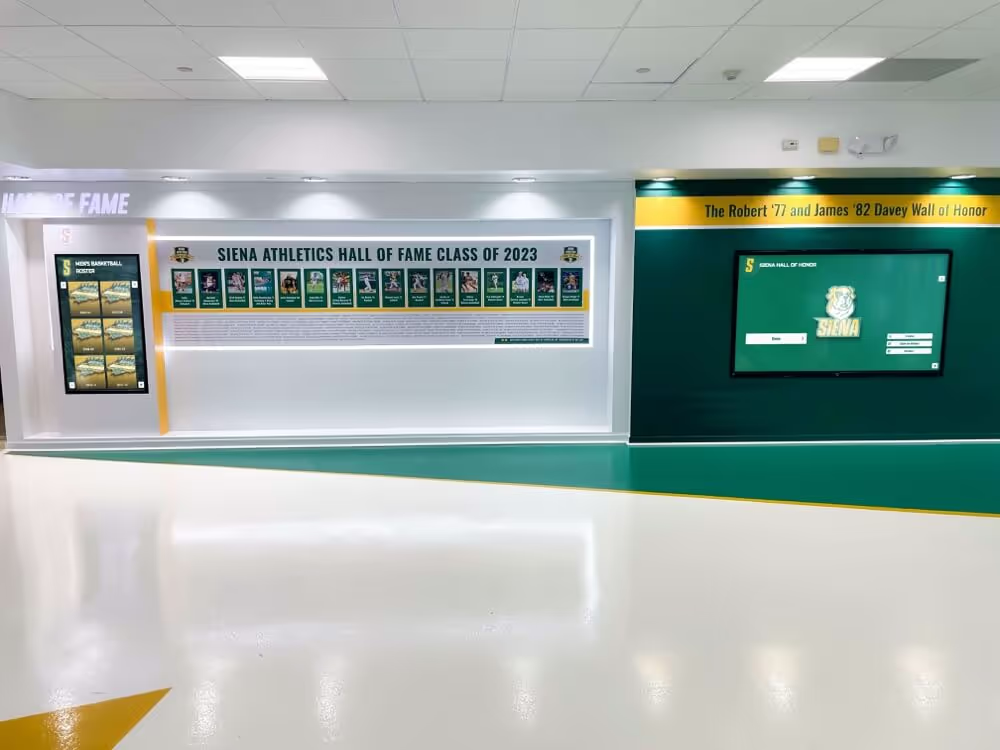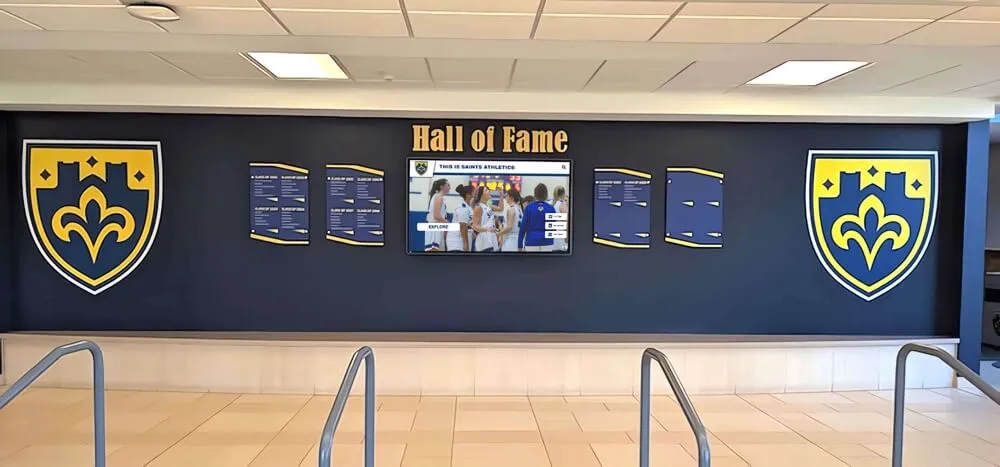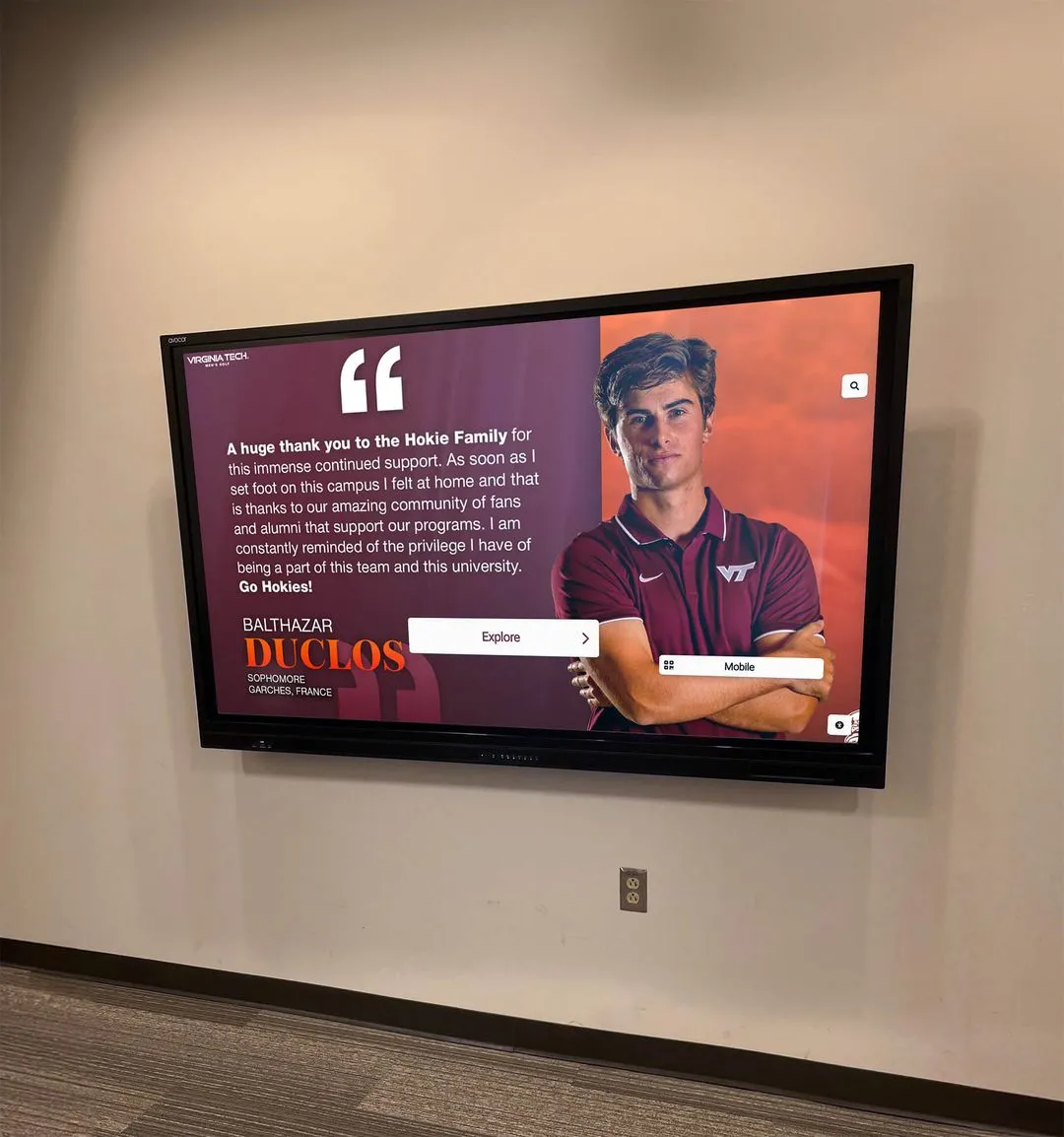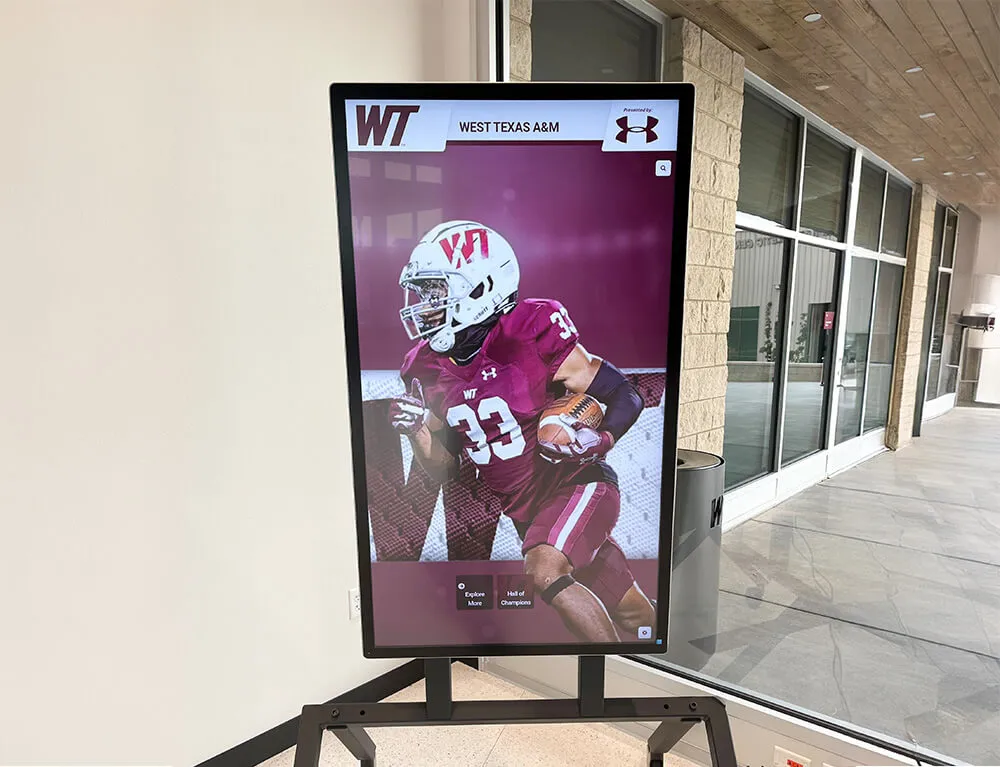In today's digital landscape, simply displaying names and photos on a screen isn't enough to create meaningful recognition experiences. The most effective digital hall of fame displays incorporate interactive elements that transform passive viewers into active participants. This engagement-first approach doesn't just modernize your recognition program—it fundamentally changes how your community connects with your institution's legacy.
Why Traditional Recognition Displays Fall Short
- Limited Information Depth: Viewers can only absorb what’s immediately visible
- One-Way Communication: No opportunity for viewers to engage with content
- Content Fatigue: Without fresh interactions, even digital displays become invisible
- Measurement Challenges: No way to track engagement or effectiveness
- Accessibility Barriers: Restricted to those physically present and able to view standard displays
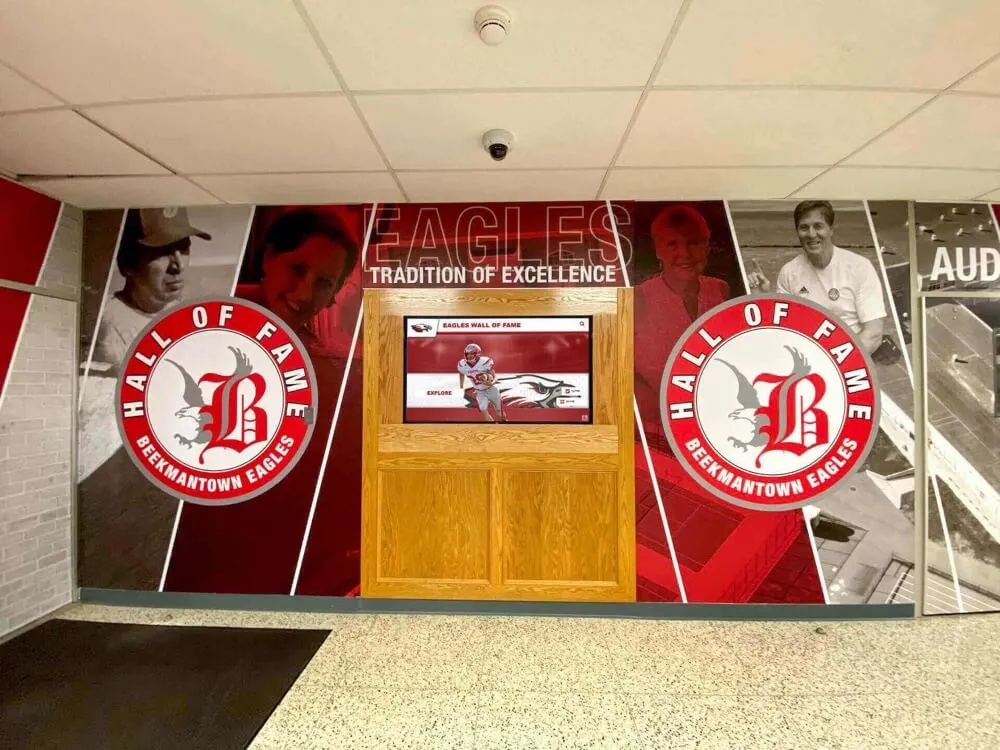
Traditional recognition methods lack the engagement capabilities of modern interactive displays
⚠️ Warning: Engagement Deficit
These limitations explain why many schools and organizations find their traditional walls of fame gathering dust, both literally and figuratively. Without interactive elements, even the most accomplished achievements can go unnoticed.
The Interactive Advantage: Key Engagement Elements
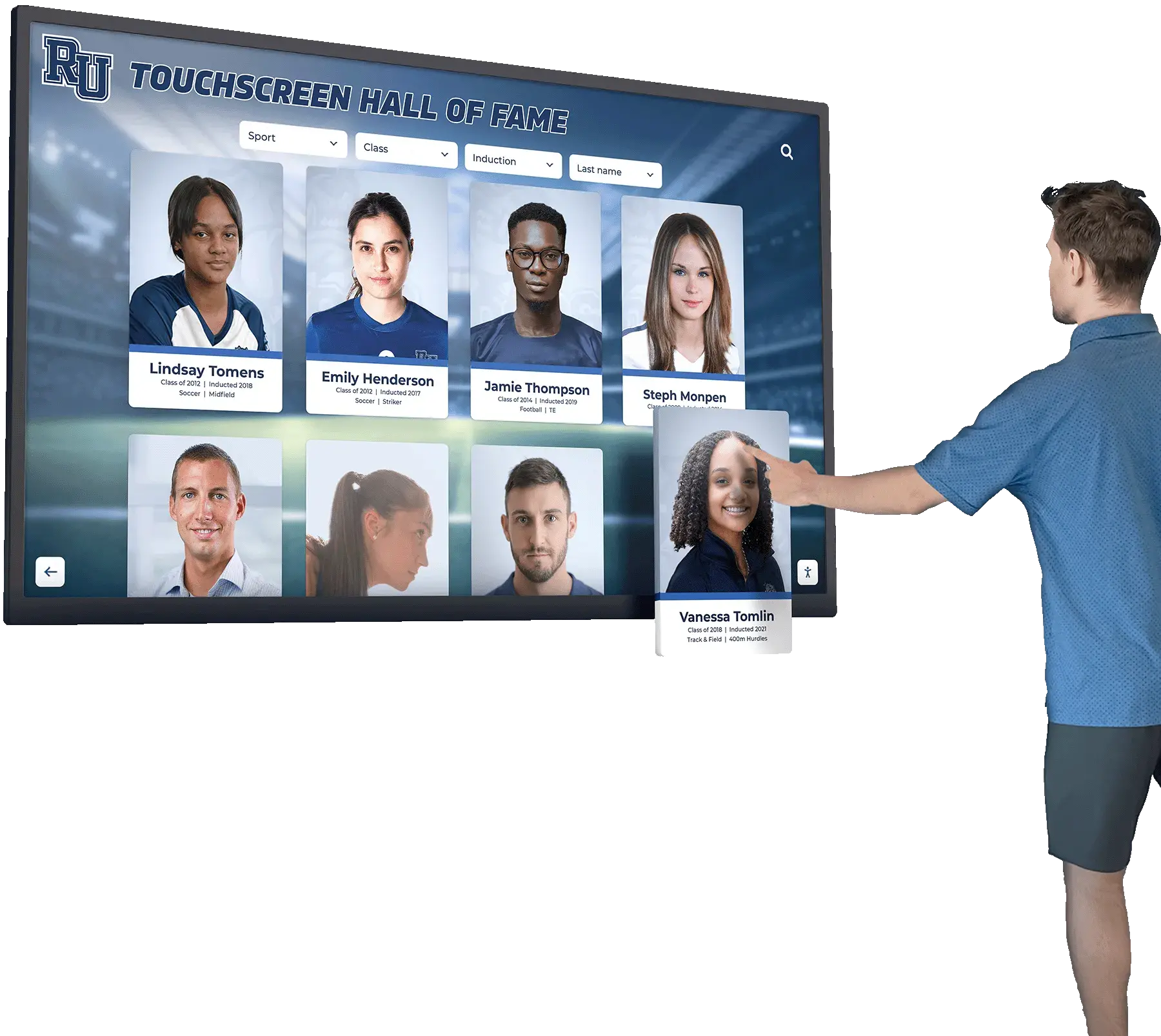
The transition to truly interactive digital donor recognition walls opens up powerful new engagement possibilities:
Touch-Driven Exploration
Modern touchscreen hall of fame installations transform passive viewing into active discovery:
- Multi-touch Navigation: Intuitive pinch, zoom, and swipe interactions
- Self-Directed Journeys: Visitors follow personal interests through content
- Discovery Layers: Surface-level information leads to deeper content exploration
- Gesture-Based Activation: Natural movements trigger engaging content reveals
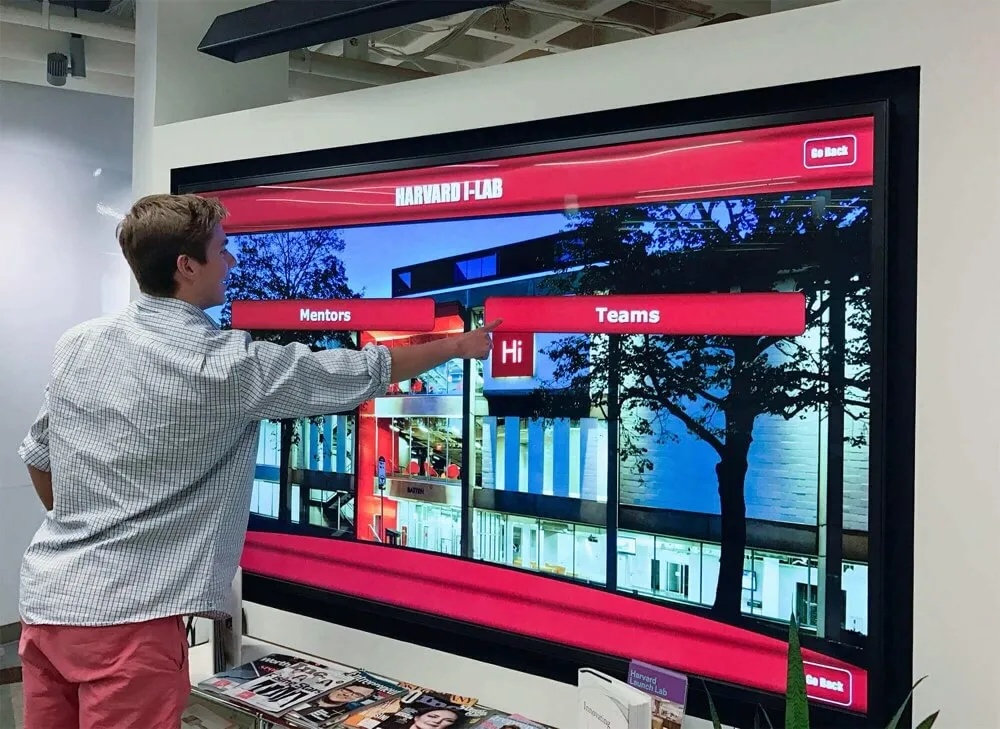
Personalized Content Delivery
Interactive athletic hall of fame software can tailor experiences to each visitor:
- Interest-Based Recommendations: “You might also be interested in…”
- Relationship Mapping: Connecting visitors to recognized individuals
- Era-Specific Exploration: Allow visitors to focus on time periods most relevant to them
- Achievement Filtering: Sort recognition by sport, department, award type, or other categories
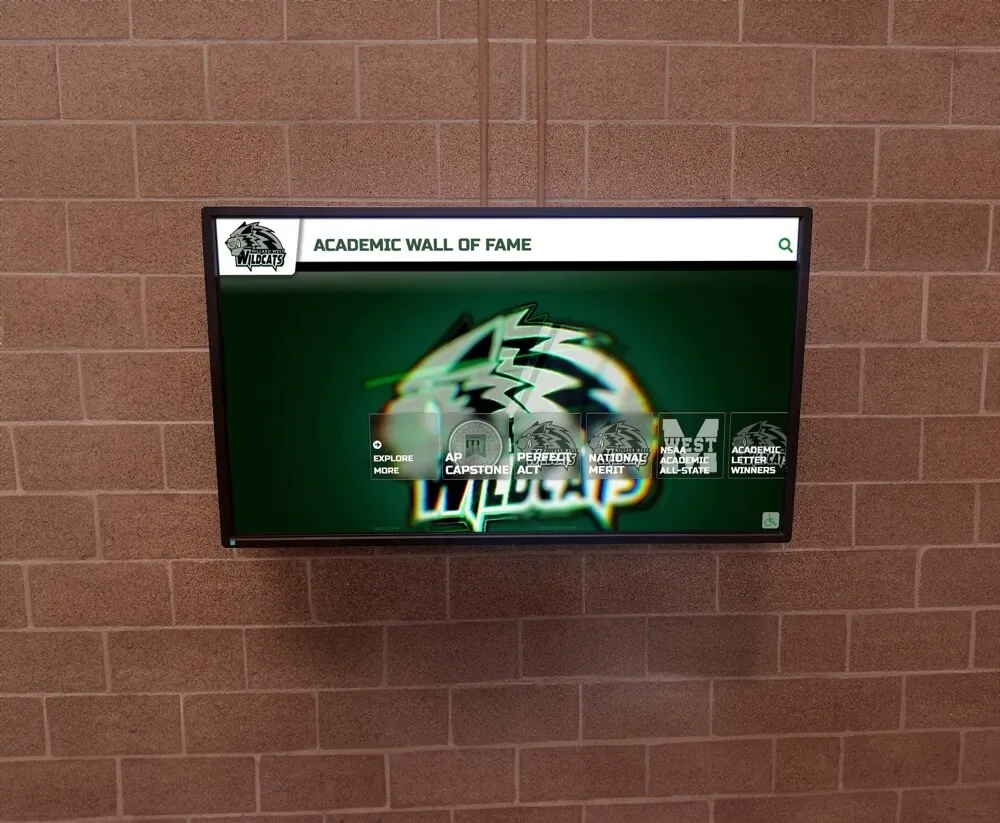
Visitors exploring personalized content at Millard High School
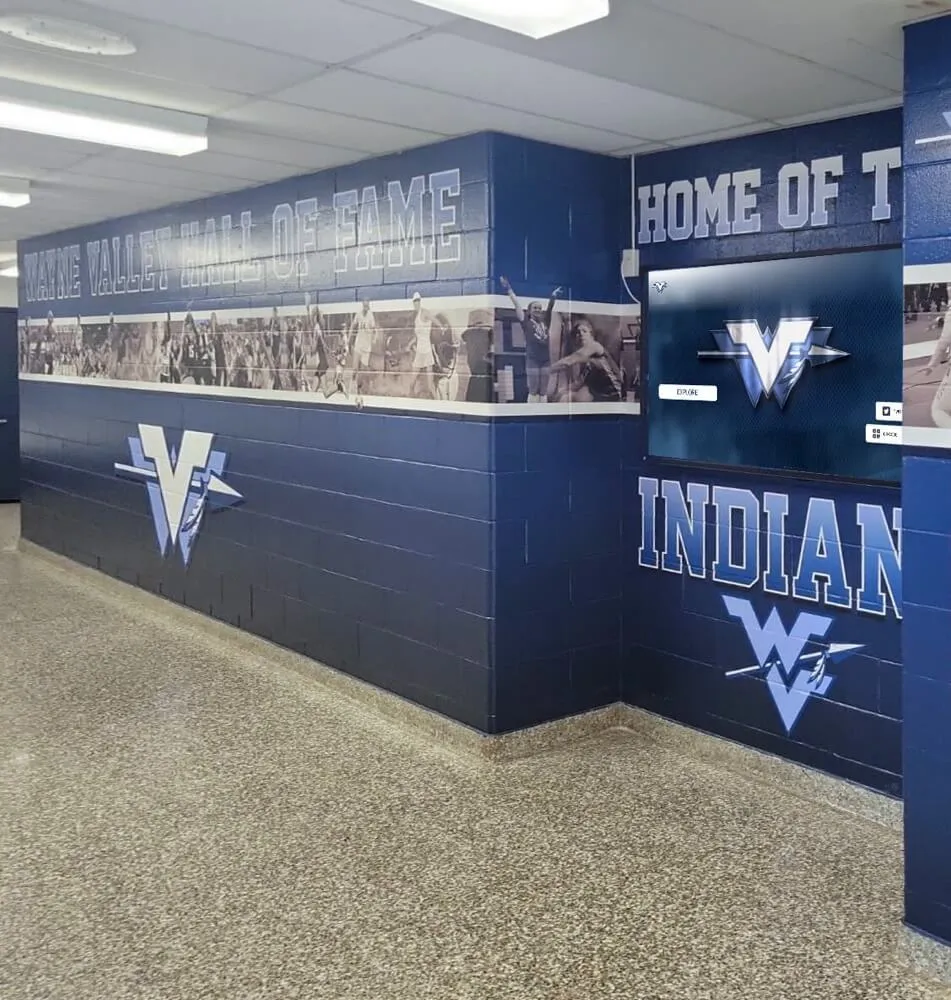
Content filtering options at Wayne Valley installation
Multi-sensory Engagement
"The power of multi-sensory engagement cannot be overstated. When visitors can see, hear, and interact with recognition content, retention increases by over 75%."
Engaging multiple senses creates more memorable experiences:
- Audio Integration: Recorded speeches, game highlights, or ambient soundscapes
- Motion Elements: Subtle animations that bring static images to life
- Video Incorporation: Highlight reels, interviews, and documentary footage
- Tactile Feedback: Subtle vibrations confirming successful interactions
Engagement Strategies That Drive Results
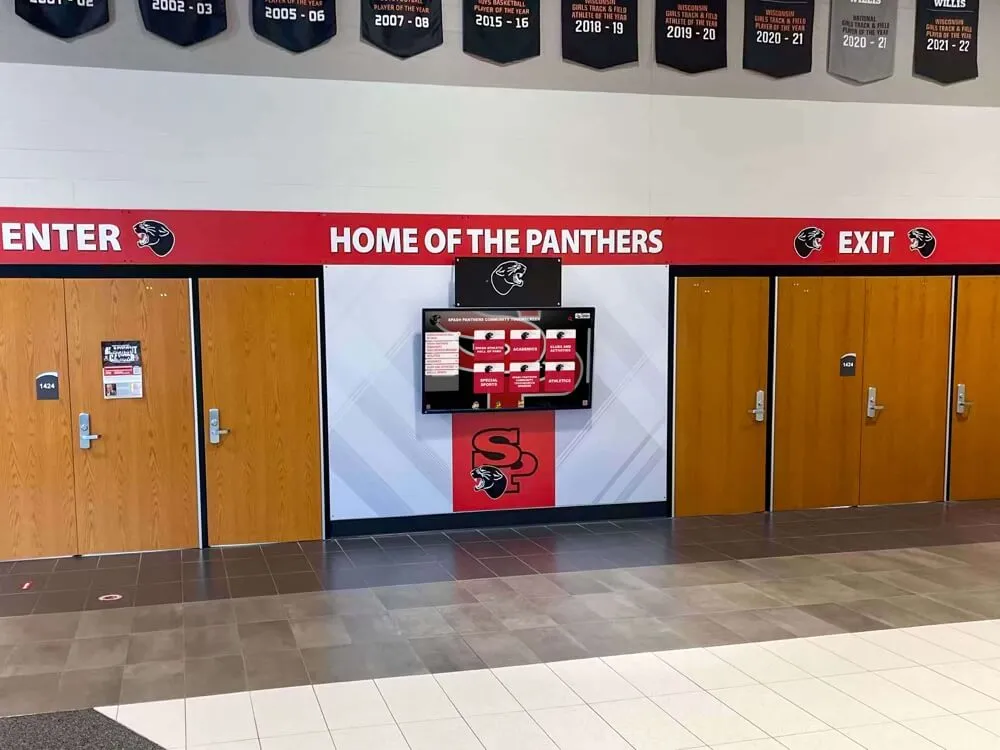
Organizations that see the highest engagement levels employ specific strategies in their digital halls of fame implementations:
Gamification Elements
🏆 Transform Passive Browsing into Active Participation
Incorporating game-like features creates memorable, engaging experiences:
- Achievement Hunts: Discover hidden content throughout the display
- Knowledge Challenges: Interactive quizzes about institutional history
- Progress Tracking: Visual indicators of explored content
- Reward Systems: Digital "badges" or recognitions for comprehensive exploration
Social Integration
Connecting the physical display with broader social experiences:
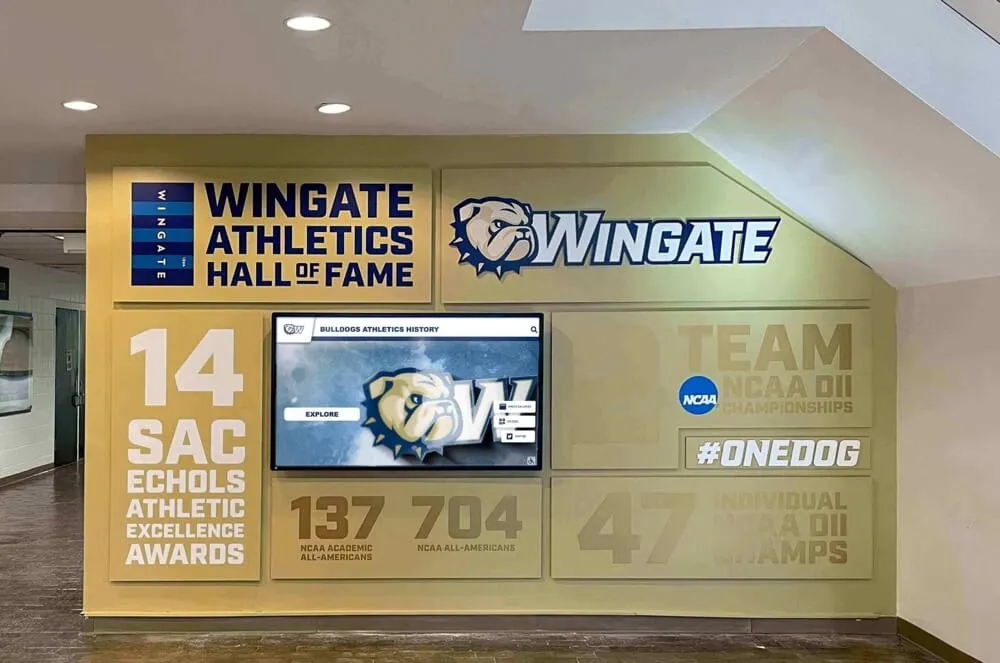
- Social Media Sharing: Enable visitors to share discoveries directly from the display
- User-Generated Content: Allow community submissions to expand recognition stories
- Memory Collection: Gather visitor recollections about honored individuals
- Digital Guestbook: Let visitors leave congratulatory messages for honorees
Time-Based Content Refresh
Featured Recognition
Seasonal Themes
Anniversary Highlights
Current Achievement Connections
Case Study: Westfield High School’s Engagement Transformation
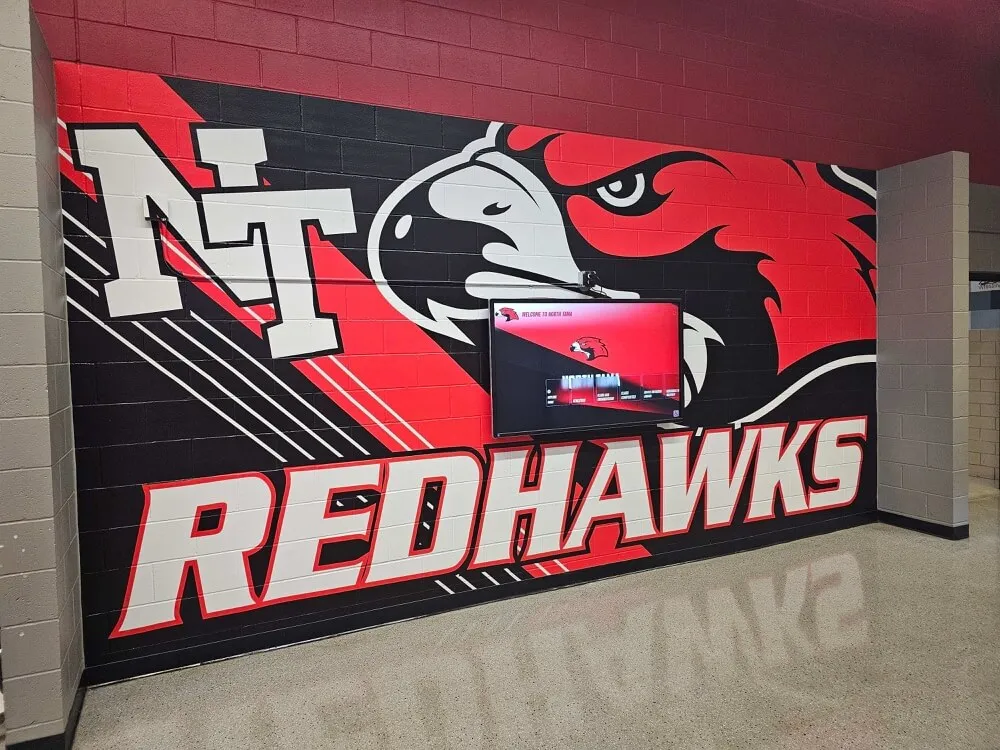
"Before implementing our interactive digital halls of fame, students would walk past our trophy cases without a second glance. Now, our touchscreen display sees constant interaction, with students spending an average of 7 minutes exploring content during each engagement session."
Their transformation included several key elements:
- Centralized Location: Placement in a high-traffic area near the gymnasium
- Content Depth: Every recognized athlete and team has multiple content layers
- Media Integration: Over 2,000 digitized photos and 150 video clips
- Interactive Timeline: Allows exploration by graduation year or sport
- Connection to Web Portal: Extended engagement beyond physical visits
The results were remarkable—within the first month, over 80% of the student body had engaged with the display, and alumni visits increased by 45% during homecoming weekend.
Accessibility: Designing Inclusive Interactive Experiences
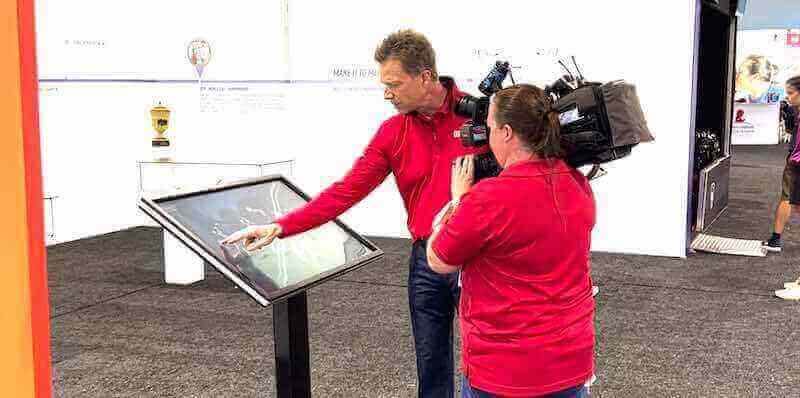
📋 Accessibility Checklist
Truly effective interactive alumni displays ensure all community members can engage fully with your recognition content, regardless of ability.
Physical Accessibility
Height-Adjustable Interfaces
Accommodate users of different heights and abilities
Non-Touch Alternatives
Motion sensors or voice control options
Clear Physical Access
Ensure wheelchairs can comfortably approach displays
Alternative Control Methods
Support for adaptive input devices
Content Accessibility
- Screen Reader Compatibility: Proper tagging of all digital content
- High-Contrast Options: Adjustable display settings for visual impairments
- Audio Descriptions: Verbal explanations of visual content
- Multilingual Support: Content available in languages representing your community
- Text Size Adjustment: User control over reading comfort
Measuring Engagement Success
Key Performance Indicators
Unlike static displays, interactive recognition systems provide valuable engagement metrics:
| Metric | Description | Target Benchmark |
|---|---|---|
| Session Duration | Average time spent interacting with display | 5+ minutes |
| Interaction Depth | Number of content layers explored per session | 3+ layers |
| Return Visitation | Percentage of users who engage multiple times | 25%+ monthly |
| Content Coverage | Percentage of total content accessed | 60%+ quarterly |
| Social Sharing | Number of content shares to external platforms | 10+ weekly |
Feedback Integration
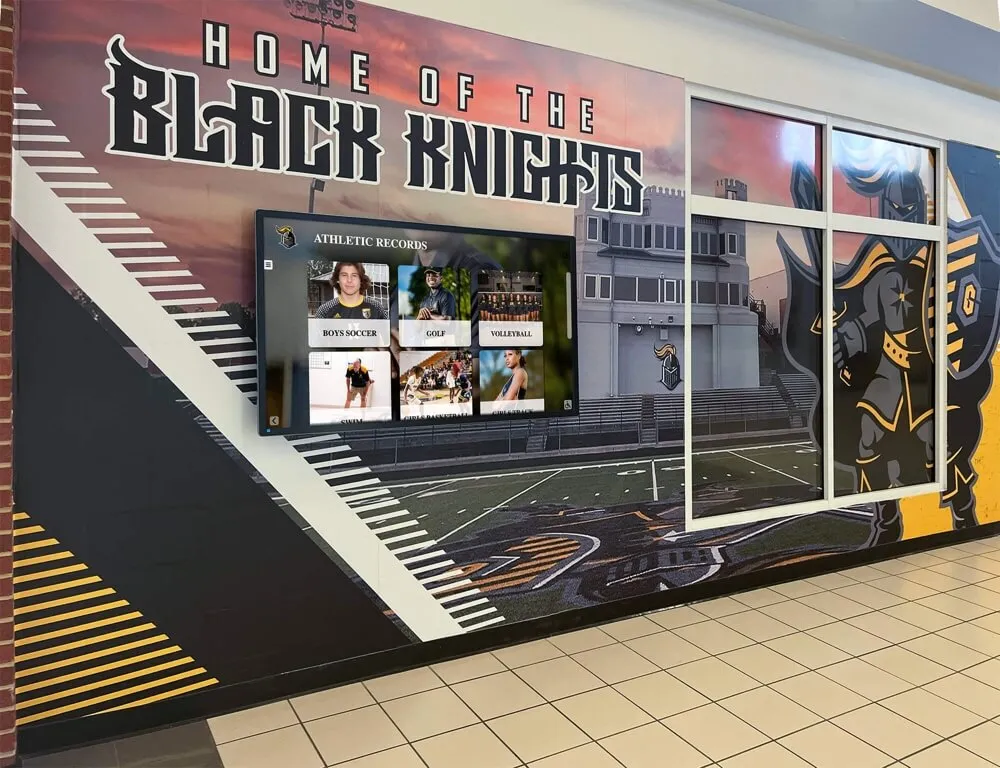
- Quick Reaction Tools: Simple emotional response options
- Brief Surveys: Optional feedback mechanisms within the interface
- Observational Analysis: Staff monitoring of user interaction patterns
- Focus Groups: Periodic in-depth sessions with different user segments
Technology Considerations for Maximum Engagement
The technology behind your interactive athletic hall of fame software significantly impacts engagement potential:
Hardware Selection
- Touch Sensitivity: Commercial-grade screens with multi-touch capability
- Screen Size and Resolution: Large enough for group viewing, crisp enough for detail
- Durability: Protected screens designed for high-traffic environments
- Processing Power: Sufficient to handle video and complex interactions without lag
Software Platform
- Intuitive Interface: Self-explanatory navigation requiring no instructions
- Content Management System: Easy back-end updates by non-technical staff
- Analytics Integration: Built-in tracking of engagement metrics
- Remote Management: Cloud-based control of content and settings
- Integration Capacity: Ability to connect with existing databases and systems
Implementation Strategy: From Concept to Engagement
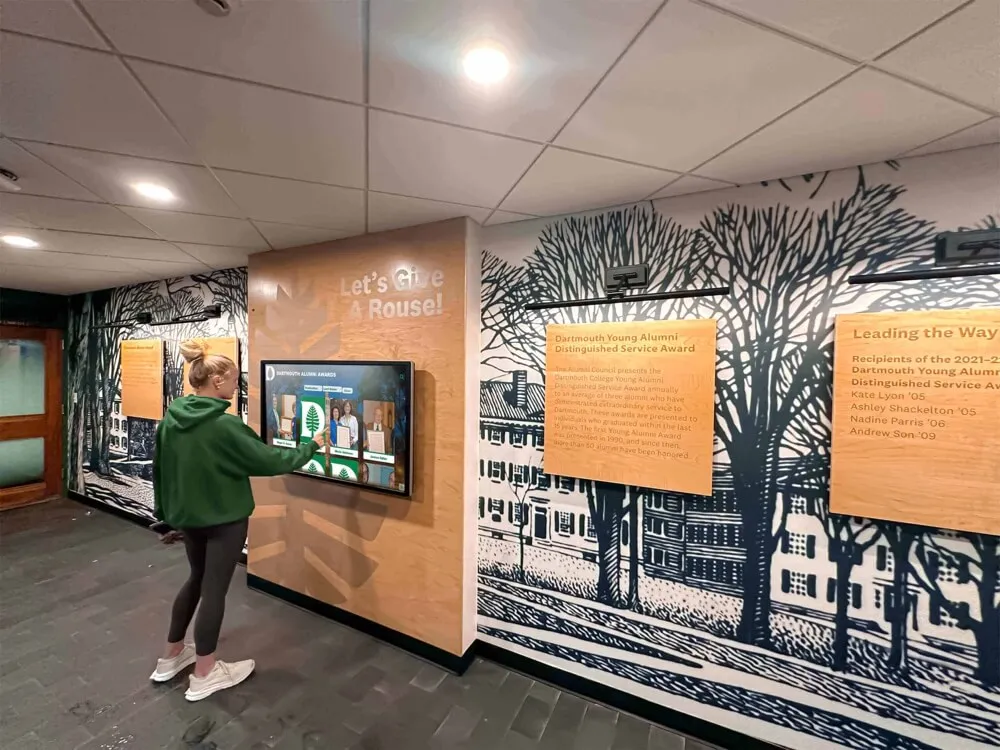
Stakeholder Input
Gather perspectives from all community segments
Content Audit
Inventory existing recognition assets and identify gaps
Space Assessment
Evaluate installation location for traffic and accessibility
Engagement Mapping
Plan the hierarchy of interactive experiences
Content Development
Create multi-layer content for each recognition category
Prototype Testing
Gather user feedback on interface and interactions
Phased Rollout
Begin with core features, expand based on usage patterns
Promotion Plan
Generate excitement and instruct on interactive capabilities
Maintenance Schedule
Establish regular content refreshes and technical updates
Web Accessibility Integration
Physical vs. Web Experience
The most effective recognition programs extend beyond physical displays to web-accessible recognition displays:
Physical Display Benefits
- Immediate visual impact
- Group viewing experience
- Tangible institutional presence
- High-resolution display quality
Web Portal Advantages
- Global accessibility
- Unlimited content depth
- Advanced search capabilities
- Social sharing integration
- Alumni engagement analytics
Synchronized Content
Physical and digital platforms share updated information, maintaining consistency across all touch points.
Extended Interaction
Begin exploration on-site, continue online through QR codes or email links to specific honoree profiles.
Remote Accessibility
Alumni and community members engage from anywhere, extending the reach of your recognition program.
Content Expansion
Web portal provides more space for extended stories, additional media, and in-depth historical context.
Search Functionality
Find specific honorees or achievements instantly through advanced search capabilities and filters.
Conclusion: The Future of Recognition is Interactive
The shift from static to interactive recognition isn't just a technology upgrade—it's a fundamental reimagining of how we honor achievement and preserve legacy. Interactive touchscreen hall of fame installations create living institutional histories that grow more valuable and engaging with each interaction.
By focusing on engagement first, institutions create recognition experiences that don't just honor the past but actively inspire future achievement while strengthening community bonds.
Ready to Transform Your Recognition Display?
Contact Rocket Alumni Solutions to discover how our touchscreen software can revolutionize your hall of fame experience.
Get Started TodaySee examples of our interactive installations:





